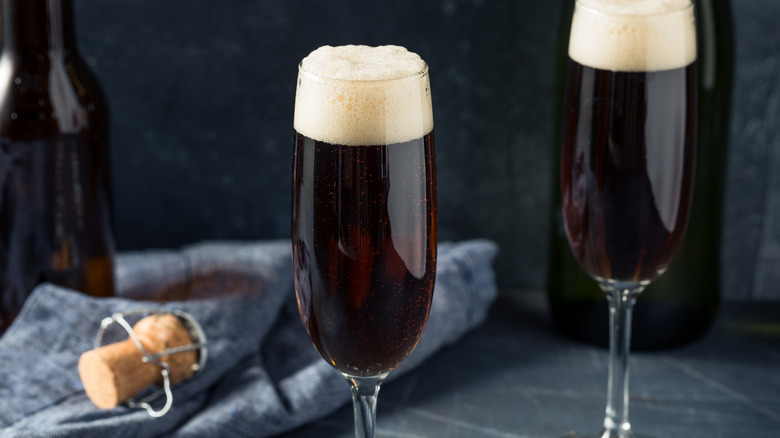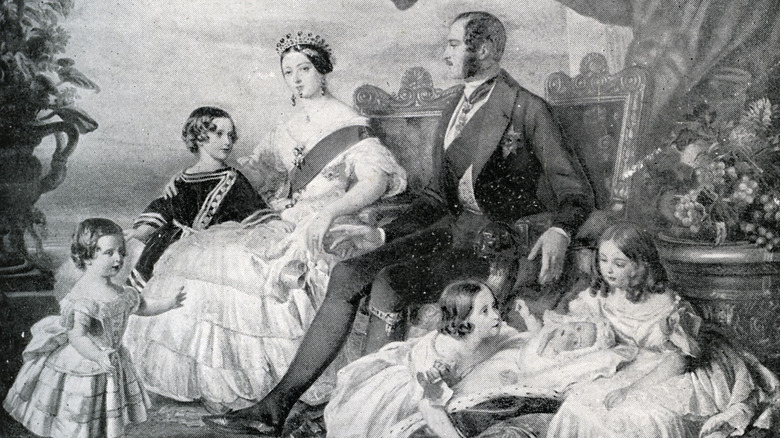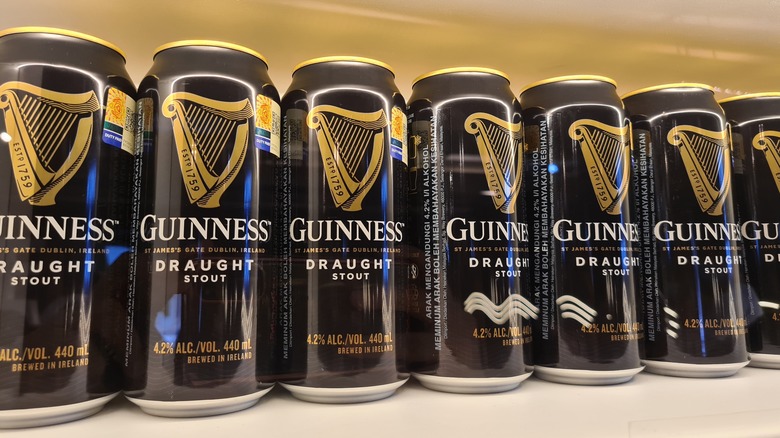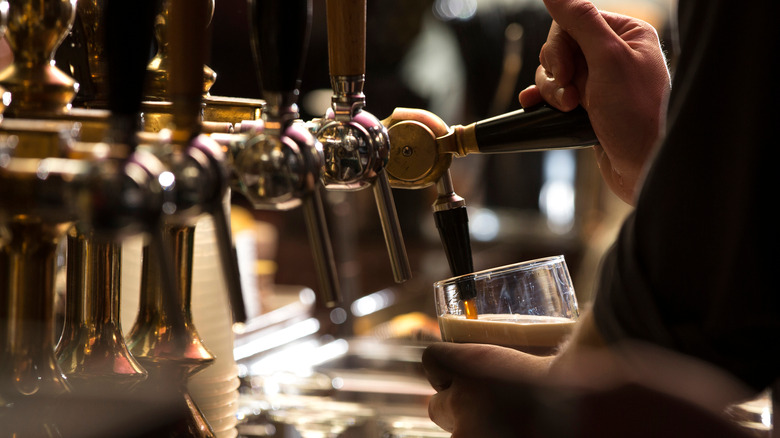Black Velvet: A Dreamy Cocktail That Mixes Hearty Stout And Crisp Champagne
Black velvet might call to mind witchy Halloween costumes, over-the-top bachelor pads, or older distinguished gentlemen in smoking jackets with matching slippers, but there's actually another item that the phrase should bring to mind. In fact, there's a unique cocktail that also bears the name, and it suits a very particular taste.
The black velvet cocktail is a champagne cocktail that leans far away from the elegant decadence of the French 75, mimosa, or Kir Royale. It doesn't involve Angostura bitters, gin, orange juice, or cassis. And it's not something you'll find at any old neighborhood dive.
With only two ingredients, the black velvet is probably the easiest cocktail you'll ever make. The luscious texture of the drink relies on an unlikely coupling of Champagne and Guinness, and if you're wondering how someone ever thought to combine the two, you're in for a treat.
The history of the black velvet
Many date the black velvet's creation to 1861, at the Brook's Club in London, just after the death of Queen Victoria's husband, Prince Albert. The drink was supposedly designed in homage to the queen, whose royal sparkle became shrouded by her black mourning clothes, which she wore for the rest of her life. But, in fact, the black velvet might date back even further, to a German cocktail from the 1830s called the Menschenfreund.
It makes sense that the black velvet came about during this time period, shortly after the word shandy (short for "shandygaff") came into use to refer to a combination of beer and lemonade sometime in the middle of the 19th century in the United Kingdom. In fact, one of the other names for the black velvet is the imperial shandy — though it's also known as the Champagne velvet or the Bismarck (after German Chancellor Otto von Bismarck, who was a big fan of the cocktail).
How to make a black velvet
The black velvet is made by combining equal parts of French Champagne and Irish Guinness. Both should be chilled beforehand, as there is no ice in the drink, and it is often served in a Champagne flute, both to show off the unusual coloring of the drink, and to make it just a bit fancier. A typical Champagne flute holds about 6 ounces, so 2.5 ounces of each ingredient will keep your glass from overflowing. Other sparkling wines can be used, but Champagne is traditional. The Champagne is typically poured first, followed by the Guinness. The even layers of bright Champagne and black stout can be preserved by pouring the Guinness slowly over the back of a spoon into the glass.
"The combination of stout and champagne sounds terrifying — something like molasses and horseradish. Actually, it's excellent. The champagne cuts the heavy, syrupy consistency of the stout, and the stout takes the sharp, tart edge off the Champagne. Each is the perfect complement of the other," wrote David A. Embury in his 1948 book, "Fine Art of Mixing Drinks" (per Difford's Guide).
Variations on a black velvet
There are near-endless possibilities for variations on the black velvet. A common one involves substituting hard cider for Champagne, which is sometimes known as a snakebite. The snakebite is similar to another drink with a dark and light motif, the black and tan, in which a stout (usually Guinness) is layered in equal parts over a pale ale.
Other options involve keeping the beer and Champagne combo but switching up the brew. Murphy's is another Irish stout that can be subbed into the black velvet, since it's a bit lighter than Guinness, with chocolate and caramel notes. Not a fan of stouts? Porters, which are made from malted barley, will have a sweeter, nuttier flavor profile than stouts, which tend to be bolder and more flavorful. So if Guinness is a bit too strong of a flavor for you, opt for a porter like Hill Farmstead's Everett with its coffee and chocolate notes or the Stone Smoked Porter from Stone Brewing with its subtle smokiness.
For the sparkling wine, Champagne could be replaced with Prosecco or Cava, but know that this will give the drink a fruitier flavor, which should be balanced with a crisp stout with sour notes.
Whatever combinations you come up with, if you keep to the basic formula of combining an effervescent wine and a dark beer, you're all but guaranteed to have a simple, but intriguing cocktail à la the black velvet.



